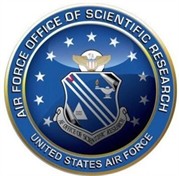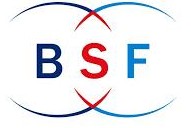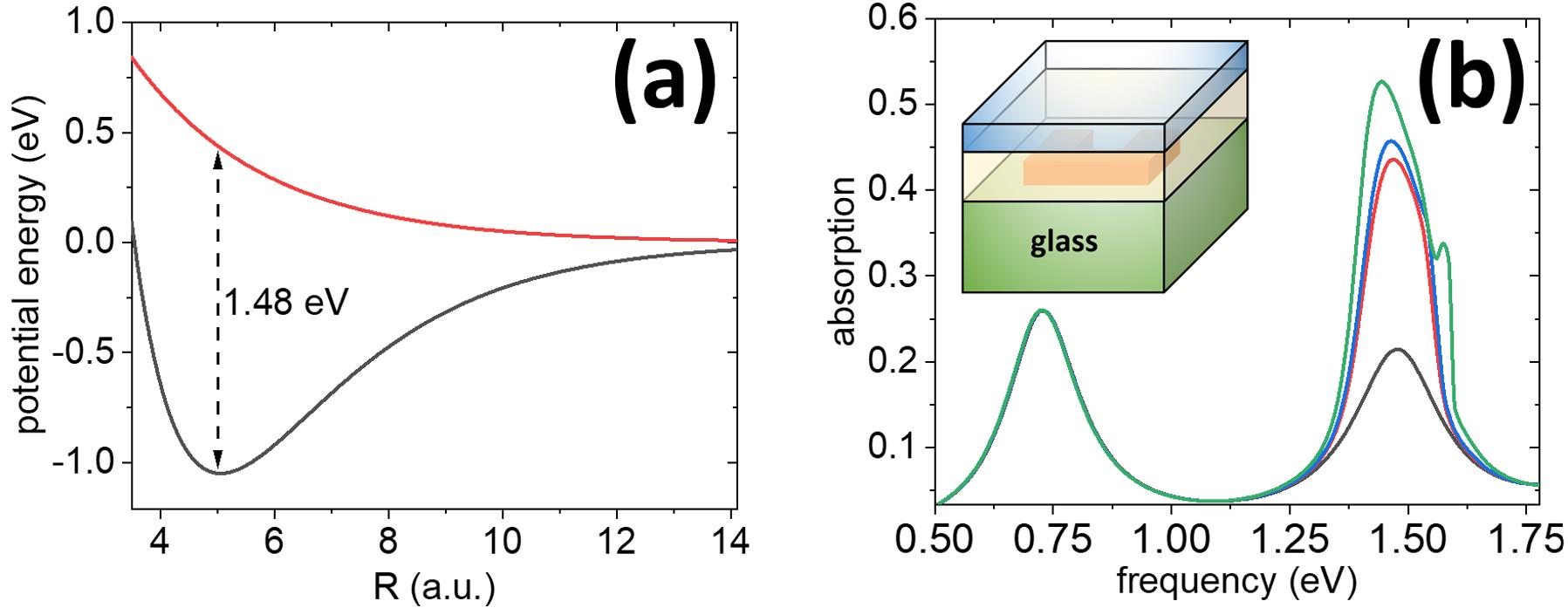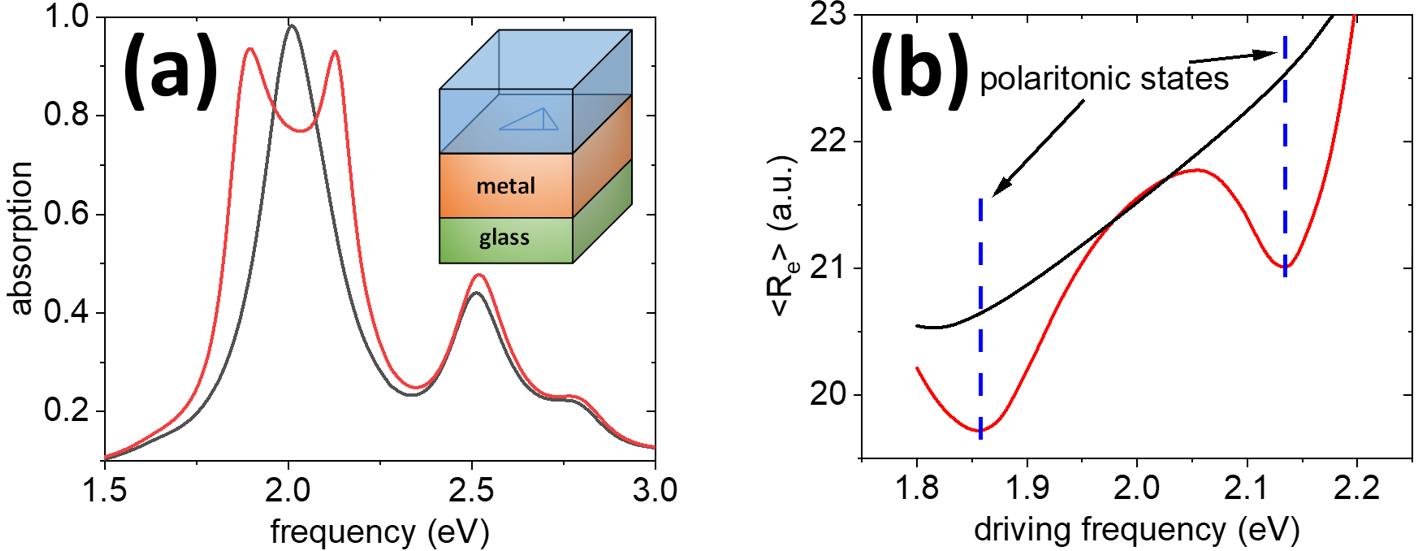



Computational Optics Group
exploring the enigmatic reality: unveiling the fusion of classical and quantum worlds in nanoscale light-matter interactions

COLLABORATIONS
EXPERIMENTS
Joshua Hendrickson [AFRL]
Shivashankar Vangala [AFRL]
Adi Salomon [Bar-Ilan University]
Tal Schwartz [Tel Aviv University]
Isabelle Ledoux [Ecole Normale Supérieure Paris Saclay]
Shivashankar Vangala [AFRL]
Adi Salomon [Bar-Ilan University]
Tal Schwartz [Tel Aviv University]
Isabelle Ledoux [Ecole Normale Supérieure Paris Saclay]
THEORY
Abraham Nitzan [UPenn, Tel Aviv University]
Joseph Zyss [Ecole Normale Supérieure Paris Saclay]
Andrei Piryatinski [LANL]
Joseph Subotnik [Princeton]
Angel Rubio [Max Planck]
Michael Leuenberger [UCF]
Joseph Zyss [Ecole Normale Supérieure Paris Saclay]
Andrei Piryatinski [LANL]
Joseph Subotnik [Princeton]
Angel Rubio [Max Planck]
Michael Leuenberger [UCF]
FUNDING


RESEARCH HIGHLIGHTS
Efficient numerical tool for integrating Maxwell-Schrödinger equations in three dimensions on supercomputers
New parallelization approach to simulate optical properties of ensembles of quantum emitters in realistic electromagnetic environments is proposed. It relies on balancing computing load of utilized processors and is built into three-dimensional domain decomposition methodology. Proposed approach enables directly accessing dynamics of collective effects as a number of molecules in simulations can be drastically increased. Numerical experiments measuring speedup factors demonstrate the efficiency of the proposed methodology. As an example, we consider dynamics of nearly 700,000 diatomic molecules with ro-vibrational degrees of freedom explicitly accounted for coupled to electromagnetic radiation crafted by periodic arrays of split-ring resonators and triangular nanoholes. As an application of the approach, dissociation dynamics under strong coupling conditions is scrutinized. It is demonstrated that the dissociation rates are significantly affected near polaritonic frequencies.

Molecular plasmonics simulations. Panel (a) shows two electronic potential energy surfaces as functions of the internuclear distance. Vertical dashed line shows the value of the vertical gap, which is set to match the localized SPPR of the plasmonic system. The geometry of simulations is depicted in the inset of panel (b), where the molecular layer shown in blue is placed on top of the PVA layer covering SRRs. The main panel (b) shows absorption as a function of the incident frequency without molecules (black) and with molecules at different molecular concentrations: (red) 8×1025 m-3, (blue) 1026 m-3, and (green) 2×1026 m-3.

Collective dissociation dynamics at plasmonic interfaces. The inset in panel (a) shows a periodic array of triangular holes in 350 nm thin Au film on a glass substrate (refractive index is 1.52). The system is periodic along X and Y with a period of 350 nm. The triangular hole is in a shape of an equilateral triangle with a side of 230 nm. Molecular layer is placed on top of the metal film and is 18 nm thick.
Panel (a) shows absorption as a function of frequency for the array without molecules (black line) and with molecules (red line) Panel (b) shows an ensemble average internuclear distance calculated using Eq. (8) for molecules in vacuum (black line) and on the metal film (red line). Vertical blue dashed lines show polaritonic frequencies.
Total number of molecules is 691,200
Total number of processors used 1536
Codes combine EM dynamics at plasmonic interfaces with quantum dynamics of molecules with ro-vibrational degrees of freedom
Total number of processors used 1536
Codes combine EM dynamics at plasmonic interfaces with quantum dynamics of molecules with ro-vibrational degrees of freedom




Unveiling the dance of molecules: ro-vibrational dynamics of molecules under intense illumination at complex plasmonic interfaces
Understanding the quantum dynamics of strongly coupled molecule-cavity systems remains a significant challenge in molecular polaritonics. This work develops a comprehensive self-consistent model simulating electromagnetic interactions of diatomic molecules with quantum ro-vibrational degrees of freedom in resonant optical cavities. The approach employs an efficient numerical methodology to solve coupled Schrodinger-Maxwell equations in real space-time, enabling three-dimensional simulations through a novel molecular mapping technique. The study investigates relaxation dynamics of an ensemble of molecules following intense resonant pump excitation in Fabry-Perot cavities and at three-dimensional plasmonic metasurfaces. The simulations reveal dramatically modified relaxation pathways inside cavities compared to free space, characterized by persistent molecular alignment arising from cavity-induced rotational pumping. They also indicate the presence of a previously unreported relaxation stabilization mechanism driven by dephasing of the collective molecular-cavity mode. Additionally, the study demonstrates that strong molecular coupling significantly modifies the circular dichroism spectra of chiral metasurfaces, suggesting new opportunities for controlling light-matter interactions in quantum optical systems.
FIGURE. Linear absorption spectra for three metasurfaces with molecules: (a) TH holes, (b) split-ring resonator holes, (c) chiral split-ring resonator holes. Dash-dotted lines in each panel show absorption without the molecular layer and solid lines present absorption with molecules.
